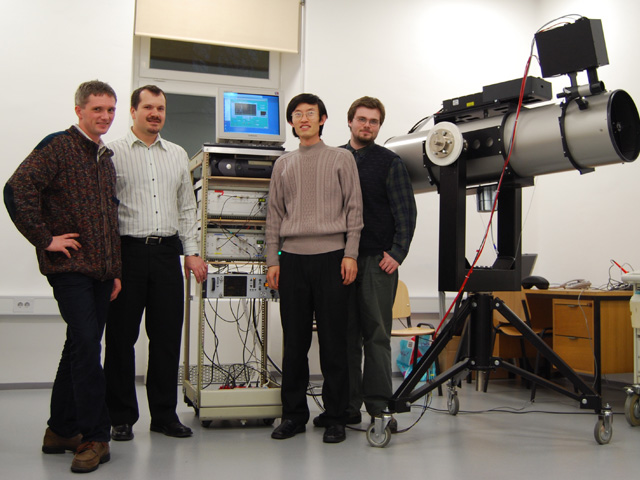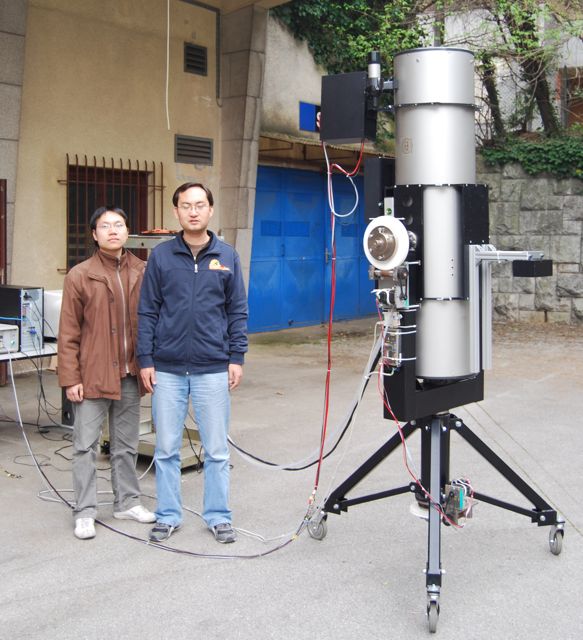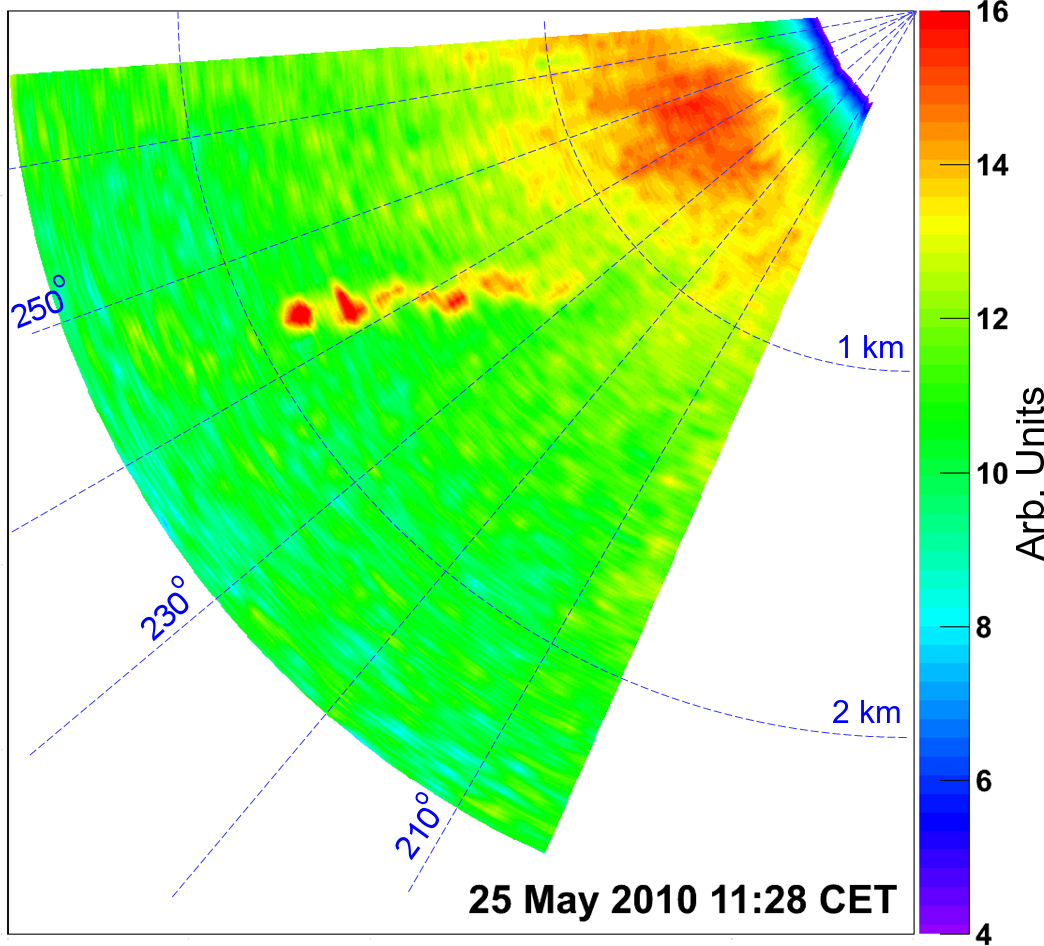Mobile Lidar Systems at UNG

Figure 1: Mobile Lidar System. Telescope and the laser are mounted on a support with computer controlled azimuth and zenith angle, allowing for 3D scanning.

Figure 2: Mobile Lidar System during vertical measurement in front of the University building in Nova Gorica.
Transmitter
CFR400 by Quantel Big Sky pulse laser, which is capable of simultaneous emission of light at different wavelangths is being used as the transmitter. CFR400 emits light at base wavelength of 1064 nm (IR), second harmonic (532 nm, green, blocked in our case) and fourth harmonic (266nm, UV). As the attenuation of UV in air is much larger than attenuation of IR, IR light is used for regular Mie scattering operation and the UV light for for the excitation of the Tryptophane fluorescence in organic materials.Receiver
12'' Dopsonian telescope by Guan Sheng Optical company serves as the receiver. 302 mm parabolic primary mirror collects the backscattered light and the induced fluorescence to its focal lenght at 1520 mm, where another mirror is placed. Secondary mirror redirects light into detecting system installed outside the telescope. The tube is rolled steel perfect to carry transmitter and detecting system.Spectroscopic filters
Dichroic mirrors made by SLS Optics Limited were applied to devide elastic scattering (at 1064nm and 266nm) and induced fluorescence (UV). The first dichroic mirror in the reciever separates UV from IR. Ultraviolet light is devided once more with the second dichronic mirror, where induced fluorescence is separated from elastic scattering. In order to separate laser backscattering signal from the background, interference filters by BARR Associates were installed. After the filters, the backscattered beam is focused onto the to the the photomultiplier tubes Hamamatsu R7400-06 (266 and 296 nm) and an avalanche photodiode Si APD S8890-30 by Hamamatsu. These sensors convert the received light into measurable electrical signals. Amplitudes of the electrical signals are proportional to the power of received light.Data Acquisition
Digitalization of lidar measurements is performed by an analog/digital (AD) converter (Licel transient recorder) and read out by a Linux based computer for data acquisition and analysis.From the time delay between the laser broadcasted light pulse and the received signal the distance to scatterer (the aerosol layer) is calculated, and from the intensity of backscattered light the density of aerosol layer is obtained.

Figure 3: 2D azimuth angle scan of the atmosphere above Nova Gorica on 24 May 2010. The measurement was performed from Škabrijel (Kekec) N from Nova Gorica.